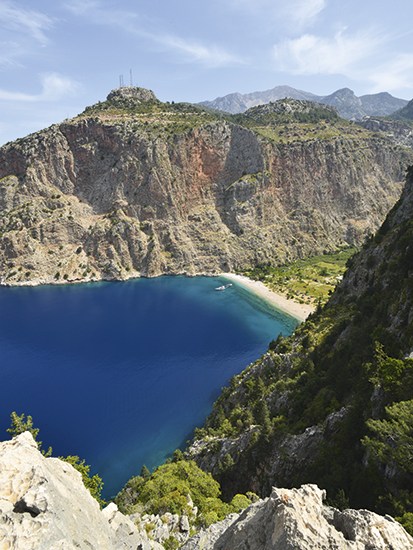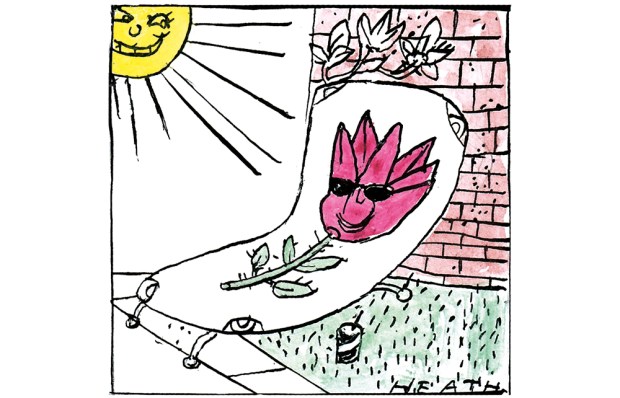Legend has it that Mark Antony considered Turkey’s Turquoise Coast so beautiful that, in about 32 bc, he gave it to Cleopatra as a wedding present. The country’s southernmost shore stretches for nearly a thousand miles and combined incredible scenery, clear azure waters and a warm Mediterranean climate. Its strategic location means it has been occupied by various empires over the course of its history, including the Lycians and Ottomans.
Two thousand years on, it is still breathtaking. The Taurus mountains provide a dramatic backdrop to the ancient ruins and beautiful beaches. With no road access to many of these hidden gems, the best way to explore them is by boat, preferably a wooden gulet. Many of these traditional fishing boats have in recent years been turned into chartered holiday cruise vessels.
We sailed across the Aegean Sea on the appropriately named Carpe Diem 1. The captain altered his itinerary depending on what we wanted to see, which gave us the freedom to explore in our own time an area that has remained largely untouched by mass tourism.
We boarded the gulet in Sarsala Bay, a short drive from Dalaman airport. Among the places where we dropped anchor was Hamam Bay, where we looked round the remains of a Roman baths built for Cleopatra. To get to the site — much of which is submerged beneath the sea — we walked along a footpath alongside pine forests, and then snorkelled to see the underwater ruins. The area is wonderful for diving and swimming.
Our boat’s 550-square metre sails were unfurled for our trip across to Ekincik Bay, near Marmaris, to visit the secluded beach and caves. With the engines switched off, and a gentle warm breeze blowing, it was quiet and peaceful. We had a similar experience standing on the deck one day at dawn to watch the sun rise over the mountains. The gulet was the only vessel around.
The reed-lined Dalyan river was too narrow for our boat, so we boarded a smaller one for a trip to the ancient ruins of Kaunos, a former sea port dating from the 9th century bc. Among the remains was a 5,000-seater Roman amphitheatre and baths. Thousands of people once lived there, but the town was abandoned in the Middle Ages due to malaria, and the city’s nobility were buried in impressive Hellenistic-style tombs cut into the side of a nearby cliff. The region is fertile, with trees laden with lemons, pomegranates and apricots, while the river teems with fish as well as sea turtles, which breed on the nearby Isuzu Beach.
On another trip, to the small town of Dalyan, we slathered ourselves in mud at the baths. Rumour has it that the clay can cure all manner of ailments. After a shower to wash it off, we returned to our gulet and moored in a tiny cove, where we spent the evening gazing at the beautiful landscape as it slowly faded into the sky.
Got something to add? Join the discussion and comment below.
Get 10 issues for just $10
Subscribe to The Spectator Australia today for the next 10 magazine issues, plus full online access, for just $10.
You might disagree with half of it, but you’ll enjoy reading all of it. Try your first month for free, then just $2 a week for the remainder of your first year.














Comments
Don't miss out
Join the conversation with other Spectator Australia readers. Subscribe to leave a comment.
SUBSCRIBEAlready a subscriber? Log in